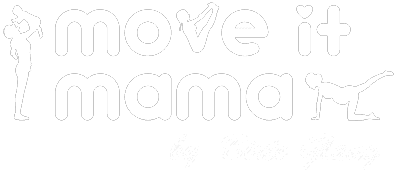Dear mom, as already announced, today we continue with the series on probably the most important topic for moms: the pelvic floor. Many new moms experience pain in the pelvic floor area. This can become quite stressful in the new exhausting everyday life of a mom. But where does this pain come from and how can it be alleviated? We’ll get to the bottom of that today.
No more feeling for the pelvic floor
Are you perhaps feeling a pulling, tingling, numbness, burning or similar “deep down” sensation? This may actually be your pelvic floor.
Especially during movements such as bending, lifting, stooping, etc. the still weakened and therefore more pain-prone pelvic floor often makes its presence. Generally known are rather the pains caused by excessive urination which is caused by a damaged pelvic floor and the accompanying bladder weakness. However, the muscles and connective tissue can make an appearance in other ways.
After a vaginal birth, you may feel that you can no longer feel your pelvic floor. Due to the great strain that the pelvic floor was exposed to during pregnancy and birth, you may experience long-lasting pain after delivery. Possibly also small bleedings, small or larger birth injuries remain.
And remember, you can have the same sensation after a cesarean section. Because even if the pelvic floor was not exposed to the entire load of a vaginal birth, it has served you throughout the pregnancy as a faithful companion to carry the weight of the baby and placenta and was thus also very stretched.
Your body is telling you that it still needs rest. Nevertheless, it is essential to rebuild and strengthen the pelvic floor muscles slowly, but in a targeted manner, and to learn how to actively relax them. This way you support the healing process and get fit again much faster.
What to do to relieve pain in the pelvic floor area
First and foremost for new moms is: Regain the feeling for the pelvic floor! You can only do this through special gentle postnatal training. As already explained in the previous blog article on “Pelvic floor and leaking after childbirth”, very special pelvic floor & abdominal breathing and exercises to activate the pelvic floor muscles help here. You can and should start with these simple exercises already in the first weeks after birth to strengthen your muscles and relieve the pain. Be careful not to overtax your body immediately after birth, as this can worsen the pain and have serious consequences.
``If you want to take safe steps, you must take them slowly`` - Johann Wolfgang von Goethe
My tip: carry your baby in a baby carrier, this supports your upright posture. This not only looks nicer, but also relieves the pelvic floor. 🙂
Listen to your pelvic floor!
It is important that you listen to your body and pelvic floor and if a movement does not feel good, you should not do it. Be sure to avoid heavy lifting or carrying, bouncing, jumping, etc. in the first few weeks after giving birth. This can be a challenge especially since you now have even more household responsibilities with the baby. So ask for help when needed! The sooner you feel better, the sooner you can be there full force for your little one.
Our MAMA WORKS THE FLOOR series helps you understand the complexity of the pelvic floor through special breathing techniques and use them specifically during pregnancy, birth and the time after.
Before birth is after birth
It is best to start training the pelvic floor before the birth. This way you learn to activate, tense and relax it and know what you can build on after birth. Especially in the beginning it is difficult to understand the three layers and their function postnatally, because the often numb feeling gives you no feedback on possible tension. Take a look at our MAMA WORKS THE FLOOR series. But don’t worry, even though it may be too late for that now, you can still get started anytime after birth and the chance of 100% recovery is good with regular training. You can also get help from a physiotherapist. In exceptional cases, an operation on the lower abdomen may be necessary.
My tip: Don’t let yourself be pushed into surgery right away, good training has already helped some people who were even advised to have surgery beforehand! However, additional care by a physiotherapist, discipline to train and patience is an advantage in any case.
That darn pelvic floor! It goes through a lot and yet has such important tasks – so we mamas have to take very good care of it. So, don’t wait too long after birth and start with very gentle postnatal mommy exercises to enjoy the new exciting time with your little one pain-free.
Keep it Moving,
Your Birte
Try move it mama 7 days for free
We give you a trial week in which you can test MOVE IT MAMA free of charge and without obligation.


